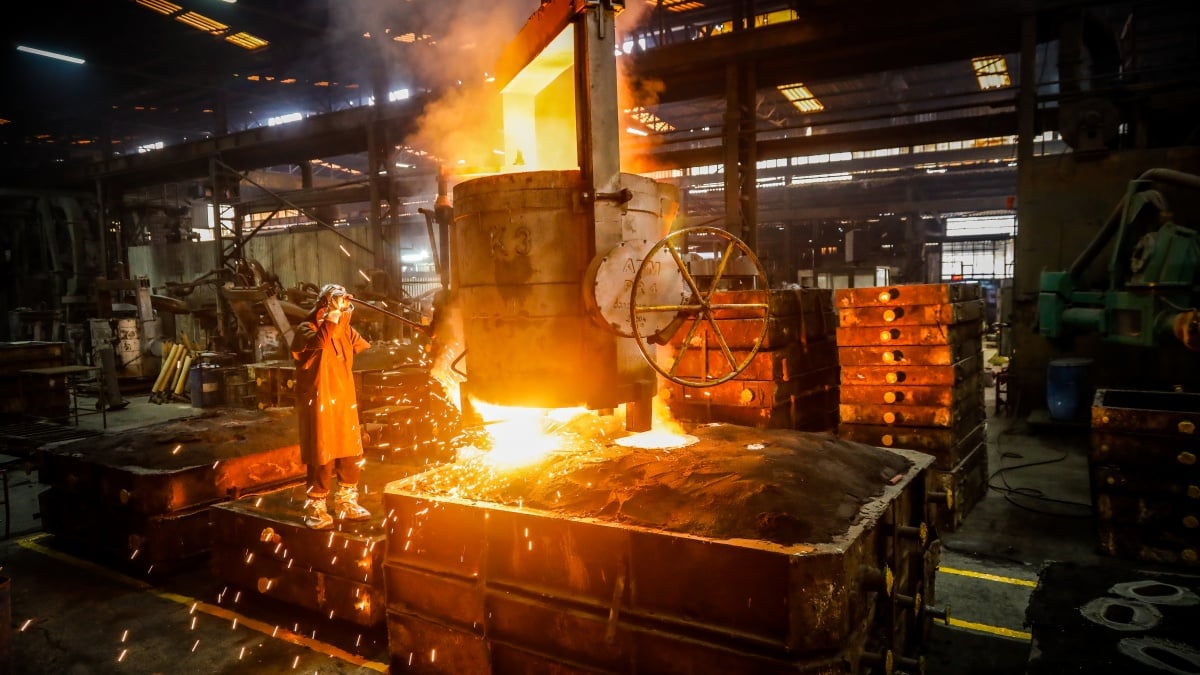In the modern era, advancements in casting technology have made it easier than ever to create a wide range of products. From intricate jewelry pieces to large-scale industrial components, castings are now more precise and cost-effective than ever before.
In this article, we will take a look at what’s new on the block when it comes to casting technology and how it has revolutionized manufacturing processes around the world.
We’ll explore the latest developments in casting materials, equipment, techniques, and applications so that you can understand why this field is rapidly becoming one of the most innovative industries today.
Improving Efficiency in Casting Processes
 Improving efficiency in casting processes can be achieved through several different methods.
Improving efficiency in casting processes can be achieved through several different methods.
One way is to streamline the production process by eliminating unnecessary steps or using software programs that automate certain tasks. This can reduce costs and improve quality control as fewer errors are likely to occur due to human error being reduced or eliminated.
Additionally, utilizing computer-aided design (CAD) technology when creating intricate molds and patterns for cast parts allows engineers more freedom while also allowing them to quickly create prototypes without wasting materials or time on overly complex designs.
Finally, modern simulation tools are also greatly improving the accuracy of results throughout the entire fabrication process which further reduces waste and cost associated with rework due to undetected flaws in parts after they have been manufactured.
All of these advancements add up to improved efficiency within foundries leading to greater productivity while still maintaining high-quality standards across all levels of production operations.
State-of-the-Art Materials for Castings
The use of state-of-the-art materials for castings is becoming increasingly popular in the manufacturing industry. From industries ranging from automotive to aerospace, more and more companies are investing in advanced casting technology to provide them with superior product quality and performance.
With advancements in metallurgy, new alloys such as aluminum alloyed with zinc or magnesium have become available which offer improved strength and corrosion resistance over traditional steels. The utilization of these new alloys requires specialized techniques for producing high-strength castings that can withstand environmental conditions such as saline water or extreme temperatures.
Additionally, computer-aided design (CAD) software has made it possible to create intricate designs that would not have been feasible before due to manual limitations. This allows for faster production times while ensuring the accuracy and repeatability of results across multiple runs.
The combination of these technologies provides manufacturers with a powerful toolkit for creating products that meet their exact specifications while providing enhanced durability and reliability when compared to previous generations of castings materials.
Automation of Casting Applications

Source: www.cminovacast.com
The automation of casting applications has seen a huge rise in recent years, as many businesses have found that this can help them to become more efficient and cost-effective. Automation can provide numerous benefits such as increased accuracy, reduced labor costs, improved consistency, and quality control.
Additionally, with the advent of artificial intelligence (AI) technology, automation is becoming even more sophisticated. AI can be used to automate tasks such as monitoring processes for defects or suggesting process improvements based on data analysis.
AI also enables automated decision making which helps reduce human error while increasing speed and efficiency in production lines. With advances in hardware and software technologies associated with the automation of casting applications, new possibilities are emerging for enhanced productivity at lower costs.
New Technologies for Design & Simulation of Casting Components
When it comes to designing and simulating casting components, new technologies have revolutionized the way engineers create complex shapes and forms. 3D printing is now allowing for greater customization potential with much faster turnaround times than ever before.
Additive manufacturing processes are providing more flexibility and accuracy when creating designs that would otherwise be impossible or too costly to fabricate using traditional methods. Computer-aided software programs allow designers to quickly test different configurations without the need for expensive molding equipment.
By using a combination of these techniques, engineers can rapidly prototype intricate parts in less time and at lower costs compared to other traditional methods. Additionally, because of increased computing power, simulation tools can accurately predict how the metal will behave during the design process which helps reduce production errors significantly from what was previously possible.
This all adds up to shorter lead times and improved quality assurance throughout the entire product development cycle – making casting technology better than ever before!
Conclusion

Source: grenzebach.com
The advancements in casting technology have been revolutionary, providing new and innovative solutions to the engineering industry.
Shell moulding castings are one of many technologies that allow for the production of intricate shapes while maintaining excellent surface finish quality. This is achieved by using advanced machines equipped with sophisticated controls, ensuring accuracy and repeatability in the manufacturing process.
Furthermore, 3D printing has become a viable option for producing complex parts with high precision and minimal waste. It also allows engineers to quickly make changes or customize parts as needed without interrupting production flow.
With these advances, it’s clear that casting technology will continue to lead the way into the future.

